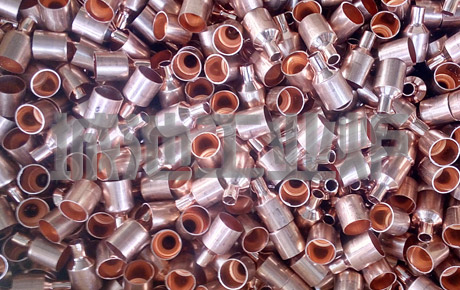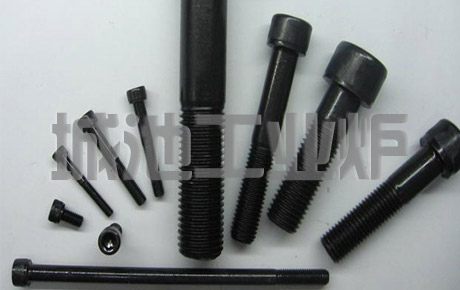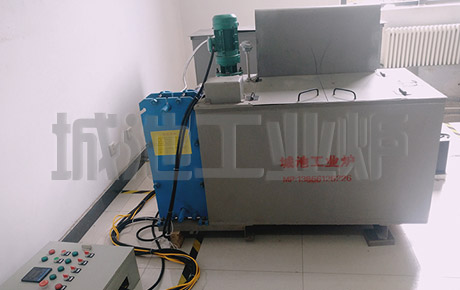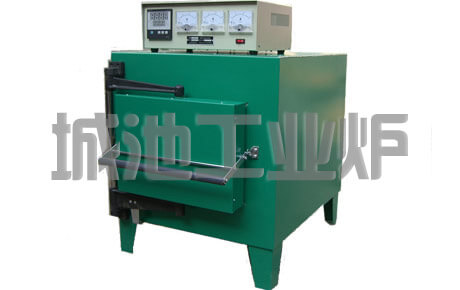Heat treatment and harm FAQ
Keywords:Heat treatment, heat, less heat, quenching cracks, heat defor
Heat treatment and harm FAQ
Overheat
Accessories from the roller bearing parts rough mouth microstructure was observed after quenching overheating. But to determine the exact extent of overheating must observe the microstructure. If there is coarse acicular martensite steel GCr15 hardened tissue, the tissue was quenched overheating. Causes may be full overheat quenching temperature is too high or too long resulting heat insulation; may also be due to the original organization banded carbide serious, low carbon zone between the two with the formation of local martensite needles thick, caused by local overheating. Tissue overheating retained austenite increases, the size stability. Since the quenched structure overheated steel coarse crystals, the toughness of the parts will lead to decline, reducing the impact resistance, the bearing life is reduced. Overheating can cause serious or even quenching cracks.
Due to heat
Quenching temperature is low or poor cooling will occur in the microstructure trust's tissue than standard, called less heat tissue, which decrease in hardness, wear resistance dramatically reduce the impact idlers accessories bearing life.
Quenching cracks
Roller bearing parts in the quenching process due to internal stress cracks formed called quenching cracks. There are reasons for this crack: As the quenching temperature is too high or too fast cooling, thermal stress and the stress changes in the volume of metal mass anti-breaking strength greater than steel; previous work surface defects (such as cracks or surface micro-zoned marks) or steel internal defects (such as slag, serious non-metallic inclusions, white point, residual shrinkage, etc.) formed during quenching stress concentration; severe surface decarburization and carbide segregation; insufficient tempering Quenching or timely tempering; cold-stress caused by the previous process is too large, forged folded, turning deep marks, sharp edges and other oil groove. In short, the quenching cracks may cause one or more of the above factors, there is the main reason for the formation of stress cracks quenching. Quenching cracks deep and slender, straight fracture, the fracture surface without oxidation colors. It is often in the longitudinal direction of the bearing ring or annular flat crack crack; bearing ball shape on the S-shaped, T-shaped or ring. Organizational characteristics quenching cracks are cracks on both sides of decarburization phenomenon, significant differences with forging cracks and material cracks.
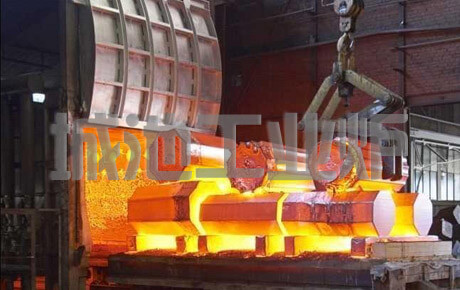
Heat deformation
NACHI bearing components during heat treatment, the presence of thermal stress and stress, this stress can be superimposed on each other or partially offset, is complex because it along with the heating temperature, heating rate, cooling, cooling rate, parts changes in the shape and size of the change, so heat deformation is inevitable. Understanding and mastering its variation can deform the bearing parts (such as elliptical rings, size up big, etc.) placed controllable range, were conducive to the production. Of course, the mechanical impact during the heat treatment also causes deformation of parts, but this deformation can be reduced to improve the operation and to avoid.
Surface decarbonization
Accessories roller bearing parts during heat treatment, if it is heated in an oxidizing medium, surface oxidation occurs so that parts of the surface carbon content reduced, resulting in surface decarburization. Depth to stay more than a surface finish decarburization will make parts scrapped. Determination of surface decarburization depth available in metallographic examination and microhardness metallographic method method. To the surface layer microhardness distribution curve measurements prevail, do arbitration criterion.
Soft spots
Due to insufficient heating, roller bearing parts of the surface hardness of local cooling is bad, improper quenching operation causes the phenomenon known as hardening soft enough points. It is the same as the surface decarbonization can cause a serious decline in surface wear resistance and fatigue strength.
More Heat treatment and harm FAQ:http://www.industrial-furnace.com/articles/Heat_treatment_problem.html

